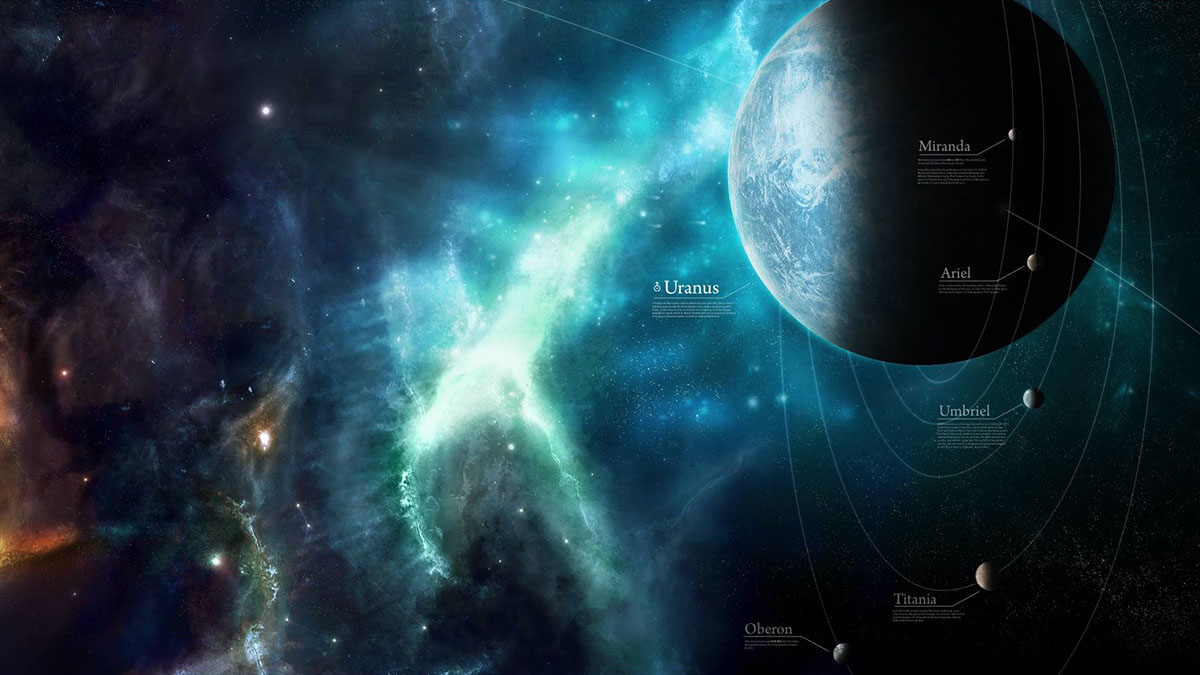yes, uranus got wrecked but that’s not even the half of it

Uranus is a weird planet to put it mildly. It’s spinning on its side with its lopsided magnetic poles pointed towards the sun. Its moons orbit at awkward angles, and its smallest natural satellite, Miranda, looks like someone dropped it, then hastily glued it back together before getting caught and casually strolling away, probably whistling nonchalantly. After adding up all this weirdness astronomers long suspected that something must have collided with the Uranus and wreaked havoc from which it never quite recovered, so what we’re seeing is the planetary equivalent of a bad limp. But what could’ve done that much damage?
While there’s no smoking gun pointing to any particular body in the solar system, a new study produced a very plausible simulation involving an object about two or three times as massive as Earth slamming into Uranus in an event lasting just over seven hours. For comparison, the impact of a Mars-sized protoplanet we call Thea into our world, creating the moon in the process, is thought to have lasted just over two days and involved only a fraction of the speed and masses involved in the Uranus impact.
when would uranus have been hit?
Considering the mass of the impactor, Uranus was probably hit during the early days of solar system formation by what sounds an awful lot like the potential core of a gas giant that never formed. The event would’ve been vicious, turning the gas giant into a rotating plume that would’ve had to re-coalesce over the next few million years, which would also explain the planet’s asymmetric magnetosphere as the aftermath would’ve scarred and deformed its core, as well as the jumbled material from which is moons could’ve been created.
Now, while this all might sound like a disastrous, cataclysmic event, this would’ve been more or less par for the course when it comes to early planetary formation, which often resembles a slow motion game of billiards more than anything else. While we may never know exactly what hit Uranus, as it’s more than likely completely destroyed, its remains scattered over billions of years of drift and smaller collisions, we at least have some idea of how big it was and how hard it hit for us to see the bizarre features of this enigmatic gas giant.
how do we check if the simulation was right?
Simulations like this give us a glimpse on what’s possible so we can look at the formation of alien solar systems and hopefully witness similar events. For example, astronomers are pretty sure we saw the aftermath of an impact like the Earth-Thea collision — and possibly the creation of an exomoon — around a white dwarf known as NLTT 43806 so we know these planetary wrecks happen, and happen often enough that we could detect them in cursory surveys.
Similarly, if this simulation is plausible, we should expect to see baby gas giants being rammed by Super-Earth sized rocks, forming spinning blobs made of mostly gas, dust, and ice that will coalesce back into awkward, lopsided planets with asymmetric magnetospheres, and broken, weirdly orbiting moons, giving alien astronomers who might evolve on another world in this solar system a similar head-scratching mystery to solve.
See: Kegerreis, J. A., et al., (2018) Consequences of Giant Impacts on Early Uranus for Rotation, Internal Structure, Debris, and Atmospheric Erosion, The Astrophysical Journal, Vol. 861, No. 1, DOI: 10.3847/1538-4357/aac725





